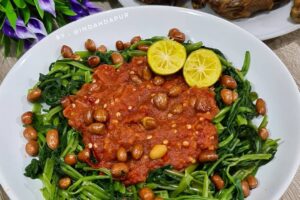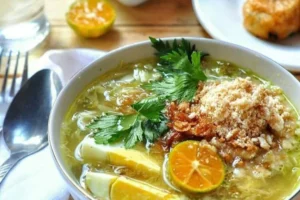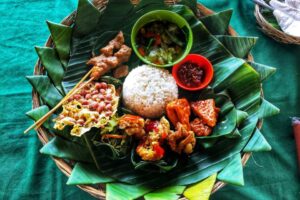Jajanan pasar, or traditional street snacks, are an integral part of Indonesia’s cultural and culinary heritage. These treats have been around for generations, offering a taste of local flavors and traditions that continue to captivate both locals and visitors alike. From the bustling markets of Jakarta to the coastal towns of Surabaya, jajanan pasar is a common sight, often sold by vendors who have passed down their recipes through the ages. This article explores the origins, variety, and significance of these beloved snacks, highlighting their role in Indonesian society.
Origins and Cultural Significance
The roots of jajanan pasar can be traced back to the early days of trade and commerce in Indonesia. Initially, these snacks were sold at ports, where they became a staple for travelers and traders from different regions. Over time, as markets expanded, so did the variety of jajanan pasar. These snacks not only served as affordable meals but also played a significant role in social gatherings, weddings, and religious ceremonies.
The influence of Chinese and European culinary practices is evident in many of these snacks, particularly in the use of ingredients like rice flour and wheat flour. However, each region has developed its own unique variations, making jajanan pasar a true reflection of Indonesia’s diverse cultural landscape.
Popular Types of Jajanan Pasar
There are countless types of jajanan pasar, each with its own distinct flavor and preparation method. Some of the most popular include:
- Onde-onde: A sweet, chewy snack made from glutinous rice flour and filled with mung bean paste, often coated with sesame seeds.
- Klepon: A small, green-colored snack made from rice flour and filled with palm sugar, topped with grated coconut.
- Lumpia: A crispy spring roll filled with vegetables, meat, or seafood, commonly found in cities like Semarang.
- Pastel: A savory pastry filled with minced meat, vegetables, and spices, often enjoyed with chili sauce.
- Bakwan: A deep-fried fritter made from a mix of vegetables and flour, typically served with a spicy dipping sauce.
These snacks are not only delicious but also reflect the creativity and resourcefulness of Indonesian cooks. Many of them are made using simple, locally available ingredients, yet they manage to deliver complex flavors that have stood the test of time.
Regional Variations and Local Specialties
One of the most fascinating aspects of jajanan pasar is the wide range of regional variations. Each province and city in Indonesia has its own signature snack, often shaped by local ingredients and traditions. For example:
- Klappertart (Manado, North Sulawesi): A layered cake made with coconut, eggs, and sugar, often decorated with raisins or other toppings.
- Panada (Sulawesi): A deep-fried dumpling filled with spiced fish and herbs, similar to a pastel but with a distinct flavor.
- Kerak Telor (Jakarta): A crispy omelet made from rice flour and egg, topped with a mixture of shrimp, shallots, and spices.
These regional specialties highlight the diversity of Indonesian cuisine and the importance of preserving local food traditions. They also serve as a way for communities to celebrate their identity and share their culture with others.
Modern Adaptations and Global Influence
While many jajanan pasar remain unchanged, some have evolved to meet modern tastes and lifestyles. For instance, pukis, a traditional pancake-like snack, has been adapted into various flavors such as chocolate, vanilla, and even matcha. Similarly, kue lapis (layered cake) has seen new variations with different fillings and textures.
The global influence on Indonesian cuisine is also evident in the fusion of traditional and contemporary elements. For example, sosis solo (Solo sausage), originally a simple grilled sausage, is now often served with a variety of sauces and side dishes, making it more appealing to a wider audience.
Conclusion
Jajanan pasar is more than just a snack; it is a symbol of Indonesia’s rich cultural heritage and a testament to the ingenuity of its people. These traditional snacks continue to thrive in the face of modernization, proving that there is a place for authenticity in today’s fast-paced world. Whether you’re a local or a visitor, exploring the world of jajanan pasar offers a unique opportunity to experience the heart and soul of Indonesian cuisine.






